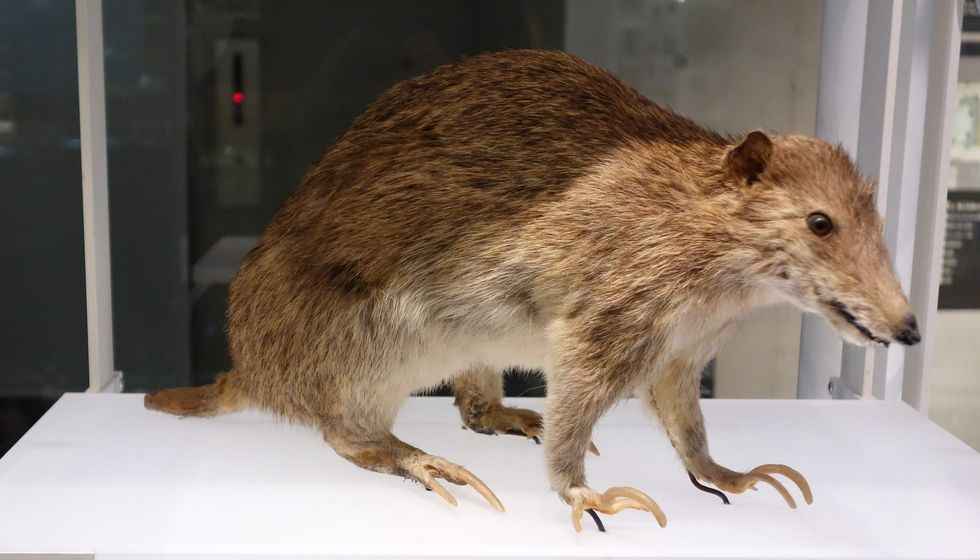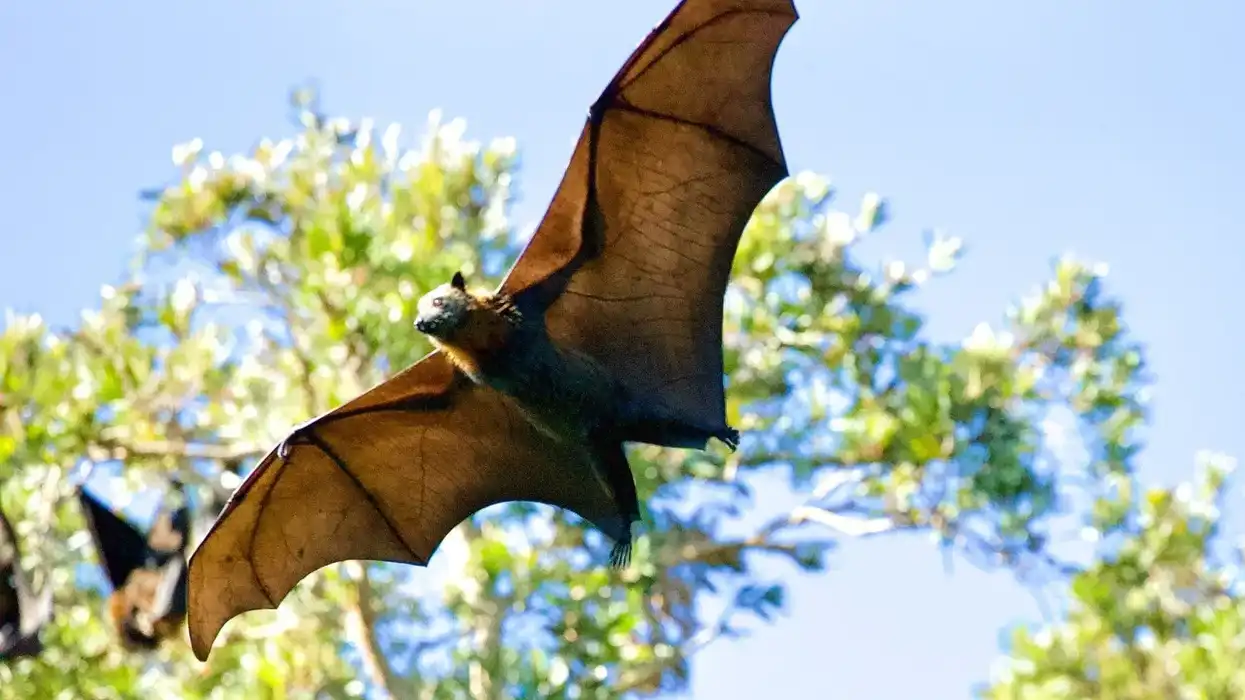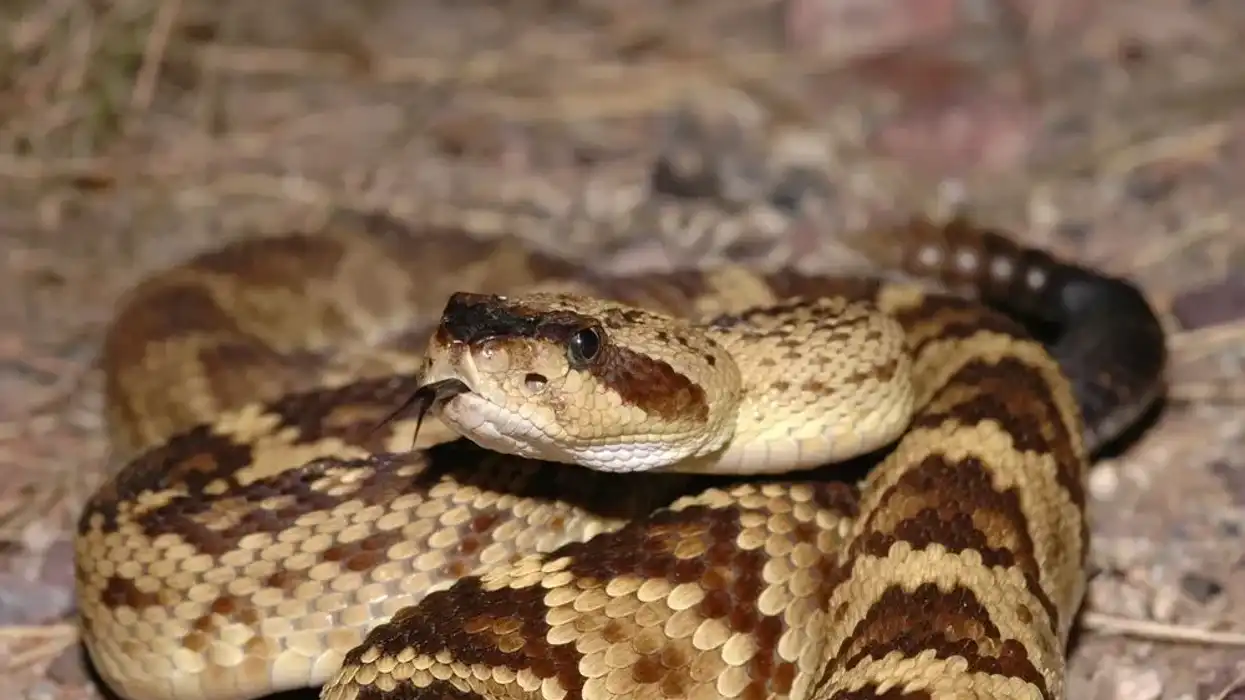Also known as the short-nosed bandicoot, the southern brown bandicoot is a medium-sized brown marsupial. As the name goes, this species has relatively small rounded ears, is short-nosed, and has a long tail. They are creamy-white on the belly but dark gray to yellowish-brown on the upper body.
Known to have an omnivorous diet, this brown bandicoot feeds on insects, spiders, insect larvae, worms, ground-growing fungi, and certain fruits and seeds. There are about four species of bandicoot recognized under the southern brown bandicoot. They were often confused with a similar-looking species known as quenda, which is native to South Western Australia.
This bandicoot is a solitary animal. They will avoid others by living in non-overlapping home ranges. The breeding season among these marsupials takes place in sync with the rainfall patterns in a year.
Males and females create a home range that varies upon the individual and habitat. Southern brown bandicoots are also crepuscular. This means that they are very active during the twilight part of the day.
Originally, the southern brown bandicoot was spread among the coastal areas of Australia. However, today, their population has a more restricted distribution. The southern brown bandicoots have their home ranges in different parts of Australia such as southern Victoria, eastern New South Wales, Tasmania, Queensland, and the Kangaroo Island.
For more relatable content, check out these gopher facts and nutria facts.
Southern Brown Bandicoot Interesting Facts
What type of animal is a southern brown bandicoot?
Southern brown bandicoots are average-sized marsupials that live in thick vegetation and feed on insect larvae, garden spiders, grubs, worms, nuts, fruits, and seeds.
What class of animal does a southern brown bandicoot belong to?
These animals belong to the class of mammals.
How many southern brown bandicoots are there in the world?
The precise number is not known but the IUCN Red List has stated that their population size is between 10,000-100,000 mature individuals. Although they have a Least Concern conservation status, their population has been on a significant decline and extensive efforts are being made to safeguard them from going extinct.
This is because of introduced predators like dogs, feral cats, and red foxes. The spread of fires is also another reason for their limited population as it has further led to the loss of habitat.
Where does a southern brown bandicoot live?
The southern brown bandicoot lives in a wide range of habitats. Their distribution occurs across south Australia, Tasmania, Victoria and eastern New south wales.
What is a southern brown bandicoot's habitat?
They make their nests in environments with thick, dense vegetation and open forests which have enough shelters and low ground cover. Making shallow holes in the ground, they nest in them during the day and also live under any plant debris or leaf litter.
They prefer living under these shelters and covers as it keeps them well hidden from predators and makes foraging for food easier.
Who do southern brown bandicoots live with?
The southern brown bandicoot is a solitary animal and hence, it lives by itself. Males get with the females only during the breeding season.
How long does a southern brown bandicoot live?
These omnivorous marsupials are known to have a lifespan of three to four years.
How do they reproduce?
Reproduction among these bandicoots is very interesting. The southern brown bandicoot does not have an exact breeding season.
They breed and reproduce many times in a year. This reproduction period is often synced with the local rainfall patterns. The gestation period in these species lasts for only 12 days.
Although females gives birth to around five litters at a time, only two to three survive. Larger mothers tend to give birth to larger litters. The young ones, after birth, pass through a card in the womb to the pouch.
The mother carries her young in the pouch for a period of about fifty days and can carry up to five babies in this pouch! It is only after three months that the young ones become self-reliant.
What is their conservation status?
The southern brown bandicoots have a Least Concern status according to the IUCN. In New South Wales, their conservation status is listed as Endangered species and in some parts of Australia, they are close to getting extinct.
Southern Brown Bandicoot Fun Facts
What do southern brown bandicoots look like?
These marsupials have a round body with a slight hump at the back and look a lot similar to rabbits and rodents. They have a short yet pointed nose which makes foraging for food in the forest and their ground cover habitat easy. Their fur has unique coloration.
On the upper part of their body, the fur can be dark gray or yellowish-brown color and their lower bellies are creamy-white. The tail is thin, relatively short and is about 5.1 in (13 cm).
They also have sharp and sturdy claws on their feet. The female bandicoot is slightly smaller than the male. She has a pouch that is at the back between her hind legs.
How cute are they?
This small-nosed bandicoot is super bandi-cute! The furry body of these animals along with their small ears and their large rumps make them look puffed up and very adorable.
How do they communicate?
Like all other species of bandicoots, the southern brown bandicoot uses its vocal, visual and auditory abilities to communicate with each other. The scent glands present behind the ears in both males and females also play a major role in intra-species communication.
How big is a southern brown bandicoot?
The southern brown bandicoot ranges between 15.7-19.6 in (39.8-49.7 cm) in length and is the same size as that of a rabbit.
How fast can a southern brown bandicoot run?
The southern brown bandicoot is a fast-moving animal and can cover up to 15 mph (24.1 kph).
How much does a southern brown bandicoot weigh?
They are known to weigh about 2.6 lb (1.1 kg). Females are smaller than males in size.
What are the male and female names of the species?
These bandicoot species do have a specific male and female name.
What would you call a baby southern brown bandicoot?
A baby southern brown bandicoot is called a joey.
What do they eat?
These bandicoots have a mixed or omnivorous diet, which means that they eat plant roots, fungi, seeds, ferns, nuts, fruits, and also insect larvae, worms, wasps, ants, and spiders. They dig conical pits into the ground, making it easier for them to forage for food.
Are they dangerous?
No, these bandicoots are not dangerous but like every other animal, they can attack when agitated or scared.
Would they make a good pet?
It is illegal to trap bandicoots and keep them as pets. Furthermore, these animals would not be exciting to keep at home given their shy, solitary, and territorial nature as well as their unique diet. Hence, it is better to let them live naturally in their native habitats where their population thrives best.
Did you know...
The southern brown bandicoot is called an "ecological engineer" as it helps in improving the turnover of the soil. They help increase the nutrient availability for plants and vegetation to grow by spreading fungi and seeds all through the forest.
They are also known to have the shortest gestation period compared to other mammal species. The southern brown bandicoot skull is also said to be large compared to other bandicoot species.
Why is the southern brown bandicoot endangered?
Southern brown bandicoots fail to avoid the scent of their native predators like tiger snakes, barn owls, and quolls. This makes their distribution vulnerable to predation by these threats.
Moreover, introduced predators like feral cats, foxes, dogs, and other big birds, are responsible for bringing a decline in their population and making this species endangered. The loss of habitat has also played an important role in making them exposed to predation.
Why do bandicoots dig holes?
Bandicoots dig holes for the sole purpose of nesting. They nest in these shallow holes lines with litter, leaves, and debris during the day and also to make quick, easy escapes from predators.
Here at Kidadl, we have carefully created lots of interesting family-friendly animal facts for everyone to discover! For more relatable content, check out these Virginia opossum facts and possum facts for kids.
You can even occupy yourself at home by drawing one of our free printable muskrat coloring pages.










